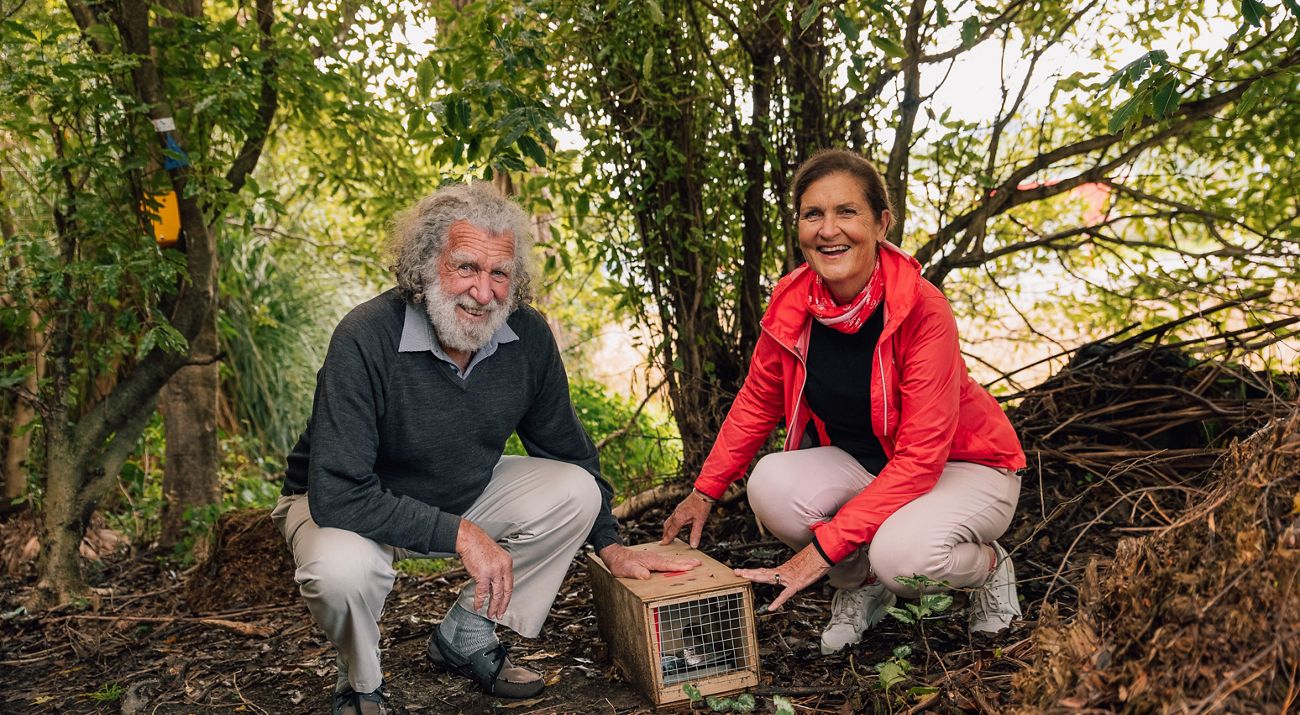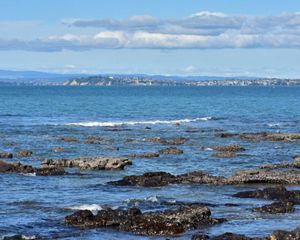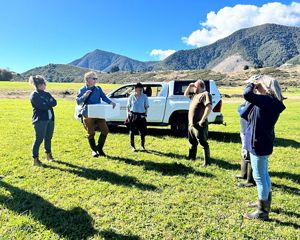Bringing the Birdsong Back
Thanks to Picton Dawn Chorus and with support from Kotahitanga mō te Taiao Alliance, birdsong is coming back to the Malborough region of New Zealand.
By Judene Edgar for Marlborough Magazine
The Nature Conservancy (TNC) is supporting the Kotahitanga mō te Taiao Alliance—a collective of 15 partners with the aim to bring conservation outcomes on New Zealand's South Island. The following story was originally posted in Marlborough Magazine, a local publication based in the Marlborough region where the Marlborough District Council, a KMTT partner, is based.
There is something special about awakening to the distinct melody of birdsong, a sound that has long been forgotten in many urban areas around New Zealand. Thanks to a dedicated team of Marlburians, birdsong is increasing in volume throughout the Marlborough region in New Zealand’s South Island. Judene Edgar catches up with members of the Picton Dawn Chorus, a community-led non-profit with the aim of restoring native birdsong, to see what’s changing.
In 1770 Captain Cook’s botanist John Banks recorded in his diary that the dawn chorus that would awaken him each morning in the Queen Charlotte Sound was the most melodious wild music he had ever heard, almost as if the birds were imitating small bells. Sadly, with extensive loss of forests and the introduction of countless pest mammals, half of New Zealand’s birds are now extinct, and many of its once-melodic forests have fallen silent. Picton Dawn Chorus was established in 2016 with the aim of reversing this trend and bringing the birdsong back.
In much the same way that they envisaged the bird population growing, Picton Dawn Chorus started with just two like-minded individuals, and has grown to over 165 volunteers and eight staff in just six short years. But while that was the dream, co-founder James Wilson says that it’s still amazing how far they’ve come in such a short time. “I didn’t dare dream how big it would become,” muses James.
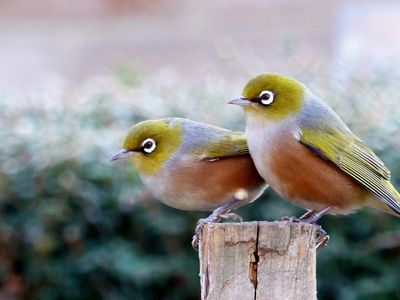
James and Siobain Finlow-Bates had read about the ‘halo effect’—native birds repopulating the urban areas surrounding sanctuaries—so with the opening of Kaipupu Wildlife Sanctuary in 2013, they felt something needed to be done to support the native birds. A series of public meetings resulted in a small committee of dedicated volunteers being formed, and it has grown from there.
“Birds don’t understand fences or boundaries,” says James, “so the idea of the Picton Dawn Chorus was to create a predator-free haven for native birds outside of the Sanctuary. Sanctuaries focus on inside their fences and do a fabulous job, but halos don’t have boundaries, so we’re constantly looking out.”
Support Our Work in New Zealand
Donate NowKaipupu Wildlife Sanctuary is separated from the surrounding areas by a 600-metre-long predator-proof fence which acts as the first line of defence, and Picton Dawn Chorus provide the second line of defence. Everyday teams of volunteers are checking trap lines, weeding, and planting, not only in the surrounding forest and mainland areas, but in their own gardens. “I’m chuffed with the way it’s grown and now we have built-in continuity and a good structure, so things are rolling,” says James.
And rolling they are. In November 2021, Conservation Minister Hon Kiri Allan announced an AUD $700,000 grant over three years, enabling them to expand their predator trapping efforts from 415 hectares to a whopping 4,815 hectares. “In just five years this group has encouraged more than 600 people to trap predators in their backyards and has a team of 165 volunteers working in surrounding bush areas,” said Kiri. “The Jobs for Nature funding will mean eight people can be employed across three years to help with the regeneration of native birdlife, lizards, insects and forests.”


Despite applying for the funding, James says that as the months passed they’d all-but forgotten about the application, so the announcement “came as a hell of a shock”. But six months later they have eight new employees in place and a five-year workplan that they need to deliver in three years!
Team member Jill Evans, who was one of the original committee members, says that “most people would be surprised about what we’ve achieved in such a short time. They see a few traps here and there but don’t realise how much we’ve grown and how effective it’s been.” In fact, their pest tally for 2021 was 13,049—primarily made up of rats, mice, possums, hedgehogs, and weasels—which was more than the previous four years put together (10,602); and that was before receipt of the government grant. They’ve also won numerous awards along the way including the Supreme Award at the 2018 Trustpower Community Awards, recognising the phenomenal efforts of all involved, and the Landscape and Habitat Enhancement Award at the 2019 Cawthron Marlborough Environment Awards, in acknowledgement of their trailblazing efforts to remove predators.
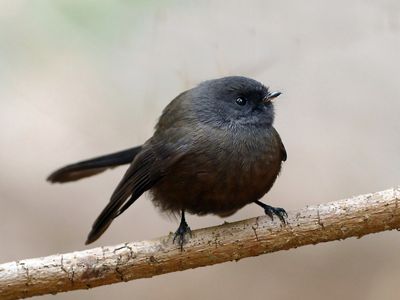
“Our Society’s mission is ‘the community working together to restore our native birds by removing introduced predators’, and I think we’ve proven that this is an effective model,” says Jill. “We wouldn’t have achieved what we have without our incredibly valuable members, volunteers and supporters. I feel like we have drawn the community together.” But Jill says that they can’t rest on their laurels, not just because of their new funding, but because there’s still a lot of work to be done to achieve their goal of Picton and Waikawa being predator-free. Project 7220 was launched in 2020 with the aim to be the first pest-free town in New Zealand, and it is hoped that the current funding will help reinvigorate that project.
While the Jobs for Nature fund has enabled staff to be employed, Jill says it in no way diminishes the need for volunteers, and, in fact, they need more than ever. “We need to expand our membership base and our volunteers as we still have a lot more to achieve. But there’s a trend of younger people getting involved now too which is really heartening.”
Quote
Anecdotally people are reporting seeing more tui, bellbirds and fantails when they go out in the bush, as well as around the town.
James acknowledges that they are victims of their own success as less pests can, ironically, be disheartening for volunteers. “There are fewer rats to be caught now, so it can be discouraging to find empty traps as our trappers want to find pests.” Despite this, he says that the volunteers still enjoy their time in the bush and know there are still rats to be caught.
While funding also remains a constant need, James says that they are incredibly grateful to all their funders, particularly Marlborough District Council and Port Marlborough who have been two of their key supporters since inception. The council provided much-needed seed-funding from day one, and the port company have provided them a home on Auckland Street alongside Kaipupu Wildlife Sanctuary and Envirohub Marlborough at Picton Environment Centre.
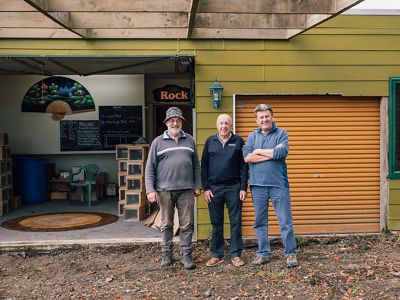
In early 2021 they were fortunate to have a building donated by Rodger Jones, a local businessman, allowing them to consolidate their trapping activities and equipment. James says that when they shifted in there was old signage on the building saying, ‘The Rock’, so that’s since become its nickname. “Out the back is a shed we store equipment in, so that’s been nicknamed ‘The Pebble’—so we now have ‘The Rock’ and ‘The Pebble’,” laughs James. ‘The Rock’ has enabled them to not only build their own traps but to provide free traps to households in Picton and Waikawa to support Project 7220. And they’ve also established a social enterprise, Dawn Chorus Trapping Enterprise, which builds and supplies traps to Predator Free NZ South Island projects and sells them online around the country. “We have refined our trap designs and processes to stay competitive and all proceeds are used to support the work of Picton Dawn Chorus,” says James.
While James says that it generally takes up to seven years before you get a noticeable difference, anecdotally people are reporting seeing more tui, bellbirds, and fantails when they go out in the bush, as well as around the town. And whether it’s just an increased awareness of the bird chorus or more birds, Picton and Waikawa residents are enjoying birdsong once more.
